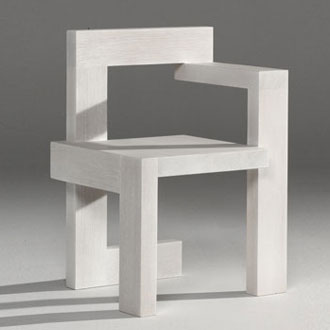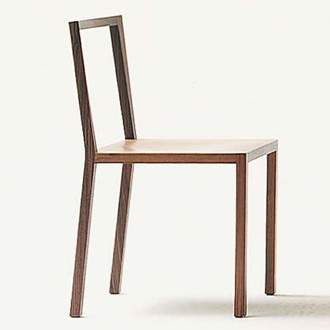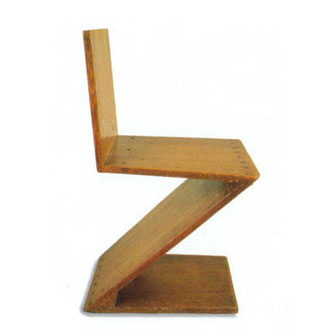Around 1923 Rietveld introduced two new formal elements in his furniture designs: these were asymmetry and constructions with flat panels.
Both of these formal elements can be arrived at by consistently thinking through the consequences of a previous exercise, namely how to create an open spatial structure from equally valued elements. The 'Berlin chair' gets its name because it was specially designed for the exposition room by Rietveld and Huszar in the show in Berlin in 1923. This chair, which later was frequently referred to as 'the plank chair', was executed with a mirror image twin.
Design:
Gerrit Thomas Rietveld, 1923 (Reedition 2005)
Manufacturer:
Rietveld by Rietveld
Both of these formal elements can be arrived at by consistently thinking through the consequences of a previous exercise, namely how to create an open spatial structure from equally valued elements. The 'Berlin chair' gets its name because it was specially designed for the exposition room by Rietveld and Huszar in the show in Berlin in 1923. This chair, which later was frequently referred to as 'the plank chair', was executed with a mirror image twin.
Design:
Gerrit Thomas Rietveld, 1923 (Reedition 2005)
Manufacturer:
Rietveld by Rietveld
























